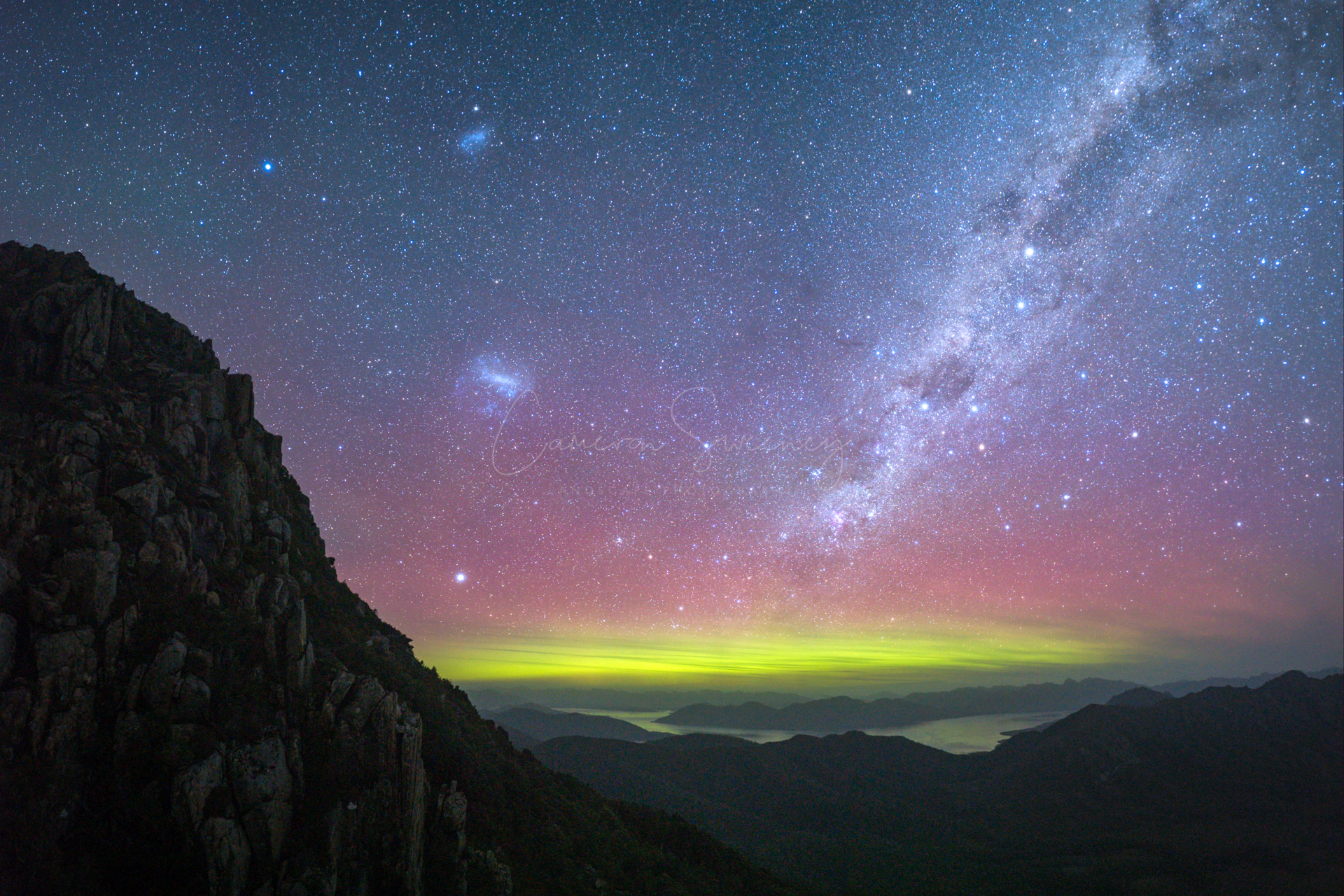Astrophotography has been an interest of mine for years.
It is highly technical and requires a high degree of dedication. Hiking during the night requires organisation and a self-sufficient nature. I first got into it whilst working night shifts at a call-centre in Darwin, I was working 7-days on 7-days off, during my week off my body clock was all over the place. I felt that lifestyle was not sustainable long term however I did enjoy the freedom and solitude of heading down into kakadu or litchfield and exploring the area at night.
Back in Tasmania, and without crocodiles, on this evening, my goal was to head up Mount Wedge and to capture the milkyway over the Sentinal Range with the Frankland Range and Lake Pedder in the distance. Prior to heading down into the Tasmanian Wilderness World Heritage Area (TWWHA), I had used photopills and Photo Ephemeris to determine where the milkyway would be aligned with the Sentinal Range. When shooting astrophotography, it is a good idea to have a particular composition in mind before you go as it is much harder to find a good composition at night. On this trip I wanted to keep it pretty open and just explore with the intention of capturing the milkyway. Hiking solo during the night is not recommended unless you are highly experienced.
To get to this location, it is an easy 2 hour drive from Hobart along the Gordon River Road towards Strathgordon and I left Hobart on a sunny afternoon. The hike is about a 3.5 hour return hike. The Mount Wedge Summit Track has an elevation gain of 950 metres and it is 7.2kms long.
As mentioned, I had kept my plan pretty open with the forecast for a clear (and frosty) evening. After a few hours of driving, only stopping to pick up snacks (crucial for photography) in New Norfolk and having dinner along the way, I arrived at the trailhead and it was cloudy and appeared to be quite low cloud. I commenced the hike with hopes that it would clear up, or that I would be above the clouds.
The lower section of the Mount Wedge track is through dense and beautiful forest, I kept an eye out for interesting flora however pushed on quickly to get above the treeline as once above the treeline the views of the Southwest are simply stunning and well worth the moderately steep and at times muddy hike.
As soon as I got to my planned destination which was the opening above the treeline, I started capturing images but the cloud was thick and the milkyway was not visible at all.. Despite having good forecasts, the weather in this area changes quickly. I kept shooting and climbed a little further, it was starting to clear up a little and I noticed a strong glow from the Aurora in between clouds. I kept shooting and started focusing my attention more on the southern lights. I hadn't checked the aurora forecast (which is unlike me) but I was willing to accept it and what a display it was.
The sky opened up with clarity and light with beams visible to naked eye, which gave me the feeling of being on top of the world. The milkyway was exactly where I wanted it. I had two cameras so I set up a wide angle lens on one and a 90mm zoom. I decided to stay in the location just below the summit as I was sure that the clouds could come back as quickly as they had disappeared. I was surrounded by cloud but virtually everything to the south was clear. It was midnight, it was frosty and cold, I had both cameras firing as I was jumping around on steep, slippery rocky outcrops. In the cold of night on a mountain peak in the remote southwest, I was going through a heap of batteries and I was getting tired, and running out of snacks. I had set up one of my cameras as a timelapse and the lens had frozen over. Not long after, the cloud was coming in. My goal was exceeded, I made the call to pack up and hike down arriving at the car at 2am, pretty knackered but with a massive smile. thank you Tasmania wilderness!

